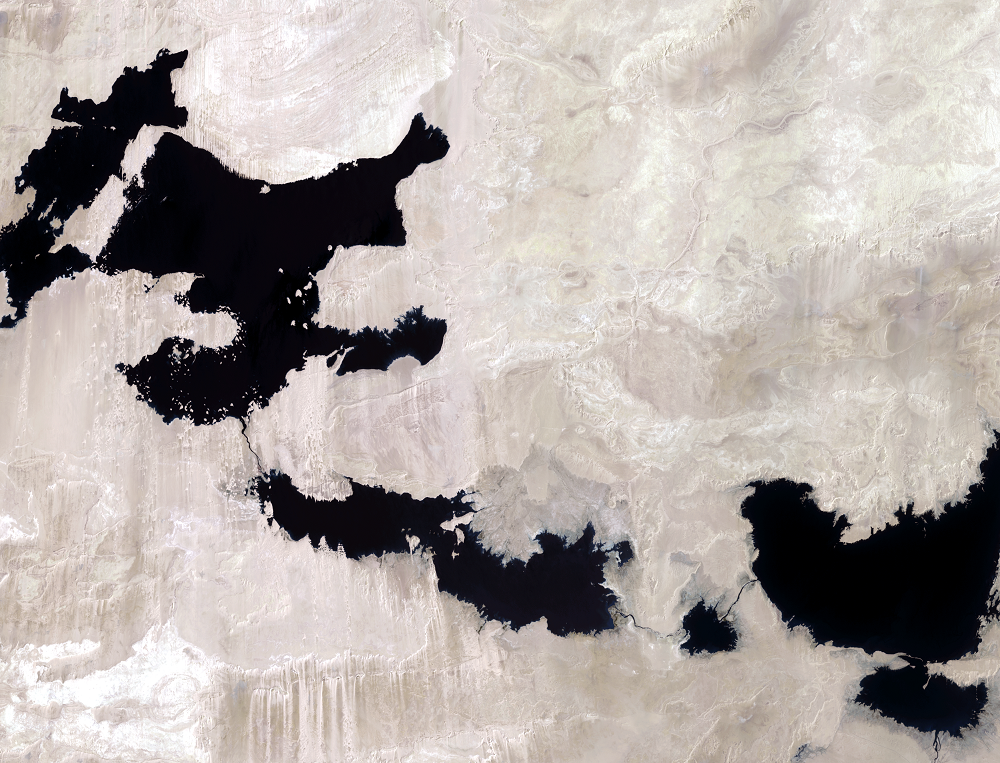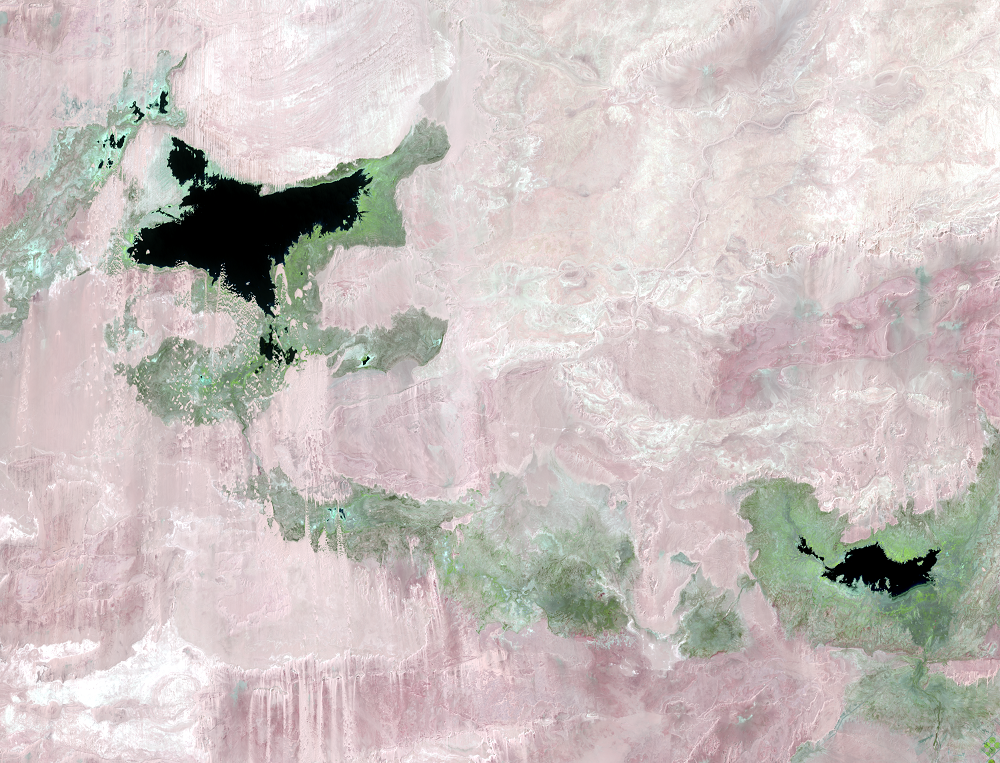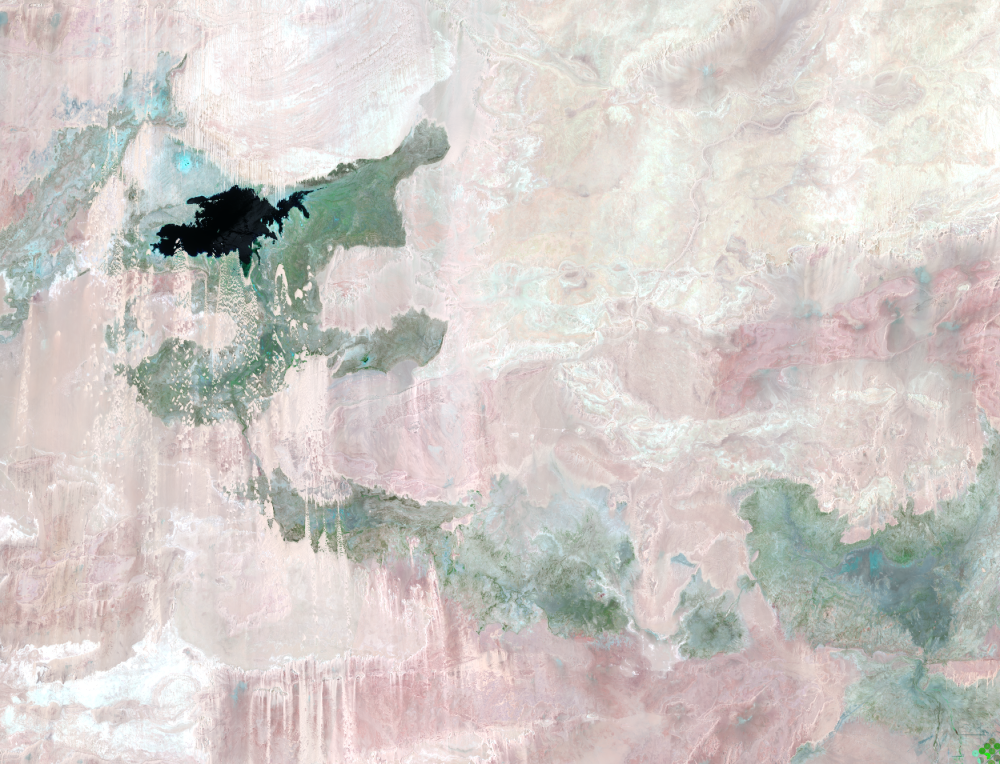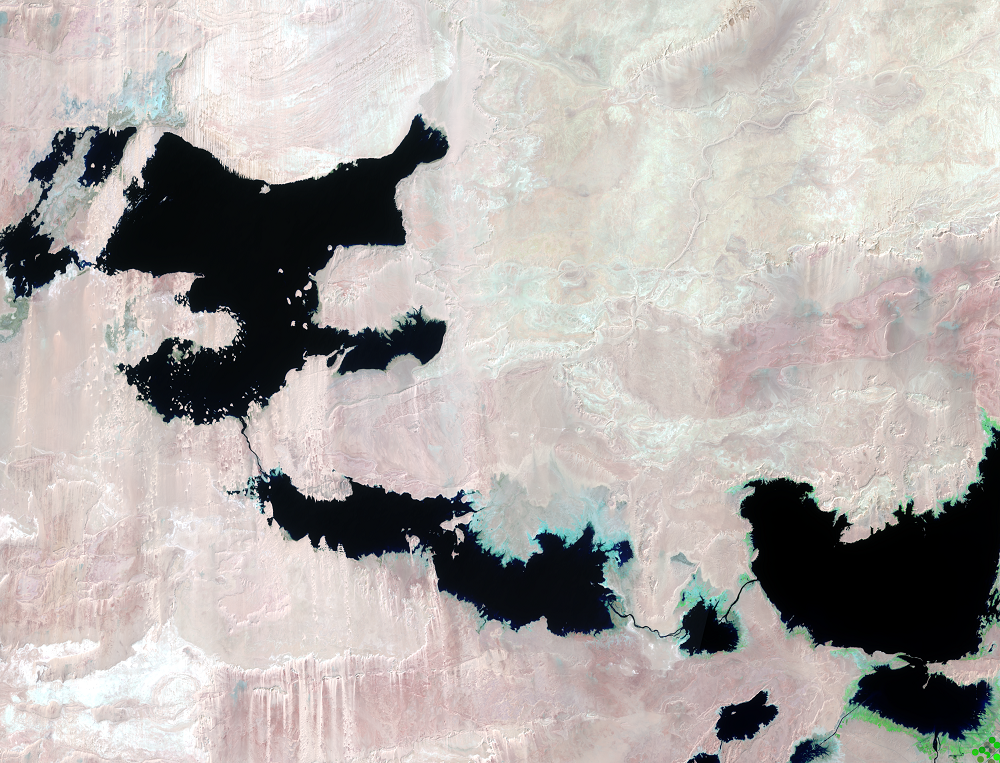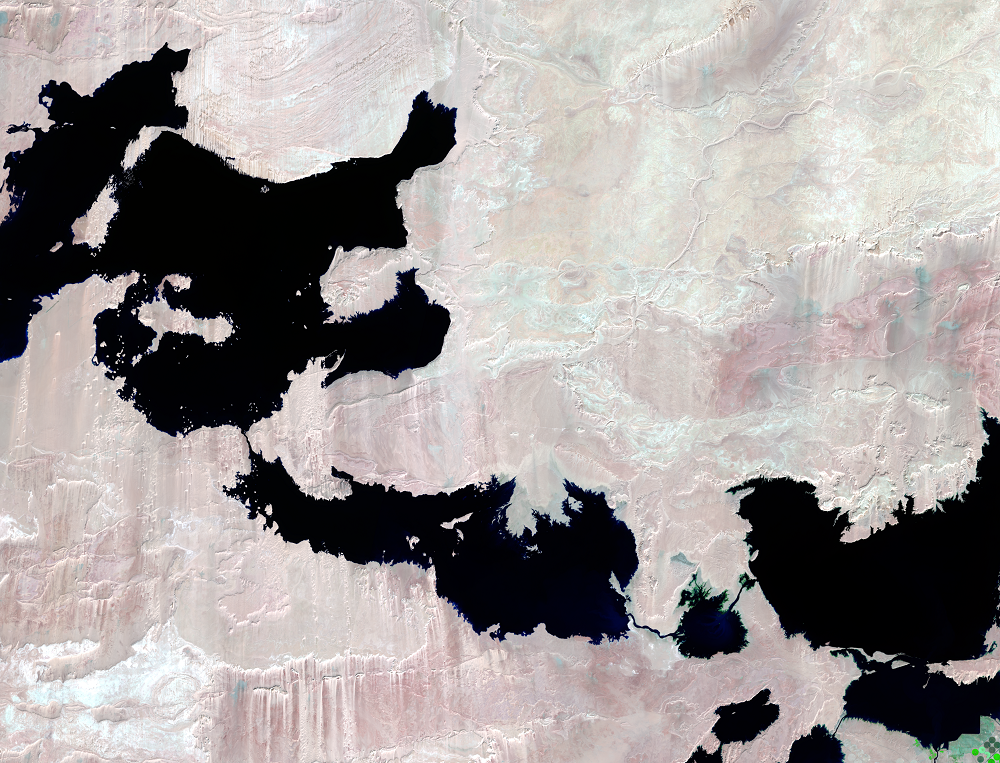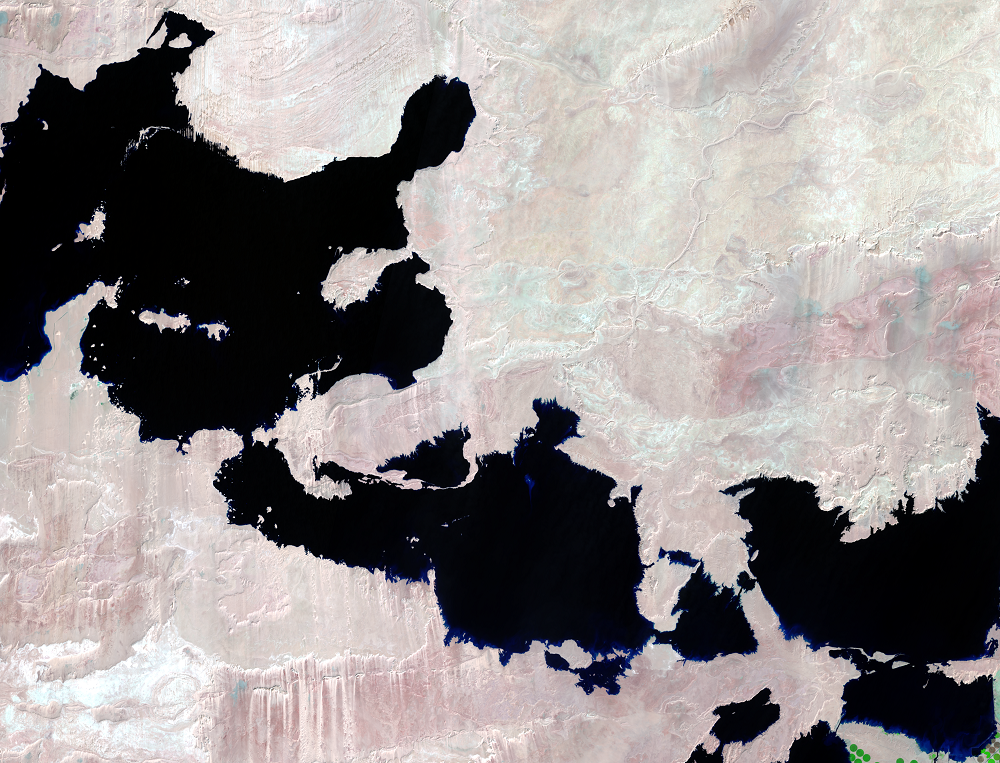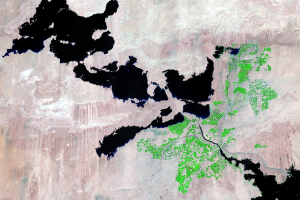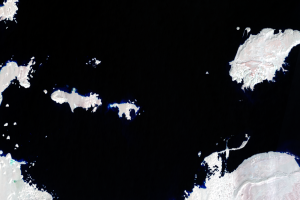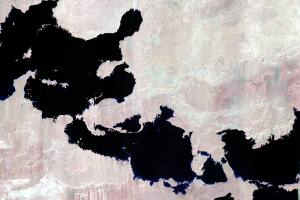
The Lakes Shrink
Earth Resources Observation and Science (EROS) Center - Earthshots
The only two places for water in this arid region to go are into the air or into the ground. The underlying limestone prevents much ground infiltration. In the Toshka region, annual precipitation averages a meager 1.5 millimeters, and the potential evaporation rate is 14–15 millimeters per day. With no natural outlet and reduced water input to these lakes from Lake Nasser, the water evaporated quickly. Starting in 2019, flooding rains in Sudan once again brought excess water to Lake Nasser, and water once again flowed into the Toshka basin.


